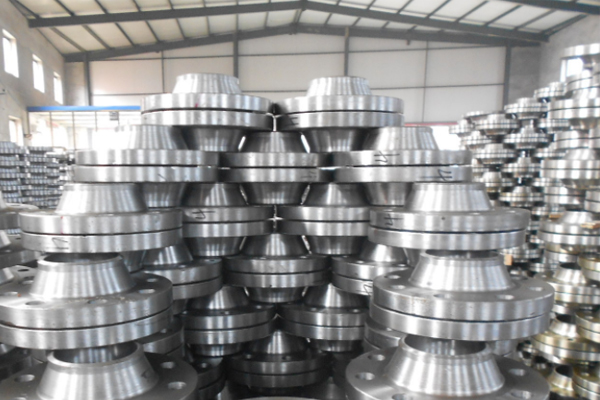Butt-welding flange is the pipe diameter and wall thickness of the interface end are the same as the pipe to be welded, and the two pipes are welded as well. Butt-welding flange connection is easy to use, can withstand relatively large pressure. For butt-welded flanges, the materials are not the same according to the different levels of pressure. From low pressure asbestos pads, high pressure asbestos pads to metal pads are available. Development of butt welding flange in the actual production and used in different ways and process of production and the production, according to the technological way and principle, for different aspects can have important value and role of certain element is added in the actual production, thereby increasing the features and value of carbon steel flange, do well the use of the characteristics and value. In the industrial pipeline, the use of butt-welded flange connection in Chengdu is very extensive. In the home, the pipe diameter is small, and the low pressure is not visible butt welding flange connections. If you are in a boiler room or a production site, there are flanged pipes and products everywhere. In the actual production process of butt-welded flanges, certain technical parameters and requirements are adopted for production and application to ensure correct use and promotion in accordance with certain methods and principles. Our colleagues adopt certain technological methods and principles for production and welding to ensure reliable quality of butt-welded flanges in use.
The product grade and technical requirements of butt-welded flanges shall comply with the relevant requirements in JB4726-4728. The forgings of carbon steel or austenitic stainless steel with nominal pressure of 0.25MP-1.0MPa are specified, and are permitted to be manufactured with grade Ⅰ forgings. The forgings with nominal pressure between 1.6Mpa and 6.3Mpa shall conform to the standard requirements of forgings grade Ⅱ or above. For flange forgings with nominal pressure not less than 10.0MPa, chromium molybdenum steel forgings with nominal pressure exceeding 4.0MPa, ferrite steel forgings with nominal pressure exceeding 1.6MPa and working temperature not exceeding -20 ℃, such flat-welded flange forgings must meet the relevant requirements of grade Ⅲ forgings. Under normal circumstances, butt-welded flanges are manufactured by forging or forging rolling technology. And if the use of steel plate or section steel materials for manufacturing, it must meet these requirements.
Butt-welding flange factory must go through ultrasonic inspection, inspection should be no stratified defects. Along the rolling direction of the steel will be cut into strips, through the bending process will be welded into a circular ring, but also to make the surface of the steel to form a ring cylinder, can not use the steel plate material machine processing into a neck butt welding flange. For the butt welds of the ring, the form of full penetration weld shall be adopted. The butt welds of the ring shall be subjected to post-weld heat treatment, and at the same time, 100% radio-inspection or ultrasonic inspection shall be conducted, and the radio-inspection results shall conform to the relevant requirements of Grade II in JB4730. The results of the ultrasonic inspection of the butt-welded flange shall be obtained. Must meet the requirements of class I standard in JB4730. Butt-welded flanges are necked, while flat-welded flanges are not. If for safety reasons, it is best to use butt welding. If it is normal medium, the pressure is not high, and the leakage will not cause danger, you can consider using flat welding flange.
Post time: May-27-2021

